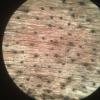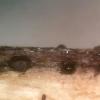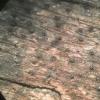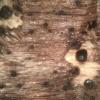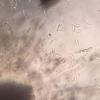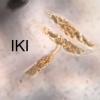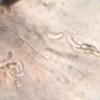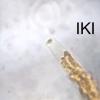
08-01-2026 21:22
 Blasco Rafael
Blasco Rafael
Hola, He recogido esta muestra de Orbilia sobre Re

07-01-2026 10:24
 Danny Newman
Danny Newman
Pezicula sp. on indet. hardwood Appalachian Highl

07-01-2026 22:22
 Danny Newman
Danny Newman
Tatraea sp. on indet. hardwood The Swag, Great Sm

07-01-2026 17:29
 Marc Detollenaere
Marc Detollenaere
Dear Forum,On a barkless Populus I found some smal

10-11-2021 17:33
 Riet van Oosten
Riet van Oosten
Add-on topic http://www.ascofrance.com/forum/7059

07-01-2026 10:05
 Danny Newman
Danny Newman
cf. Chaetospermum on XylariaCosby Campground, Grea

02-01-2026 17:43
MARICEL PATINOHi there, although I couldn't see the fruitbody, I

04-01-2026 17:45
 Stephen Martin Mifsud
Stephen Martin Mifsud
I was happy to find these orange asmocyetes which
Eutypa sp.?
Ethan Crenson,
01-05-2019 21:46
Hello all,
A friend found this pyrenomycete, which I assume is a Eutypa, in a New York City park this past weekend. It is on a small decorticated branch. The wood is darkened in places. The ostioles barely break the surface of the wood and are set apart from one another rather than assembled in a stroma. Some of the ostioles are even with the surface of the wood and others rise just barely above it. These taller ones are sulcate. The perithecia are 0.3 - 0.4mm in diameter. Spore bearing part of the asci measures 15-24 x 5-7µm. Asci are inamyloid in Lugol's or, I should say that it's possible that they are very faintly amyloid. The tip of the ascus does darken in iodine, but it is difficult to be sure that it is blue. Spores are hyaline, allantoid with an oil drop at each end, measuring 6.5-8 x 1.5-2µm. Am I correct that this is Eutypa? Any ideas which species? Any help would be appreciated.
Thanks
Ethan
Jacques Fournier,
01-05-2019 22:56

Re : Eutypa sp.?
Hi Ethan,
yes likely an Eutypa. Most species are host-specific, thus knowing the host is very helpful to find a way in this difficult genus.
I don't recognize your fungus, it might be American. Rappaz (1987) mentions E. mela (Schwein.) Cooke on Quercus, which might fit more or less your collection.
If you can send me the material I would be happy to look into it.
Best,
Jacques
Ethan Crenson,
02-05-2019 01:17
Re : Eutypa sp.?
Very good to hear from you, Jacques. Eutypa mela, perhaps! This was one of the outcomes when I put my collection through the Rappaz key (or my idiosyncratic translation of the key). However, I am not very clear on the meaning of "ostioles often trigones" (ostioles souvent trigones). The other option that arose from the key was Eutypa maura... because I was interpreting the iodine reaction as negative and because the key makes a point of mentioning that the spore bearing part of the asci are <30. I will examine the wood to try to determine if it is Quercus. I will be happy to send you a sample. The usual address?
Jacques Fournier,
02-05-2019 09:16

Re : Eutypa sp.?
Eutypa mura is restricted to Acer pseudoplatanus, it strongly blackens the wood surface and the distribution pattern of black tissue around the perithecia is different from what your image shows.
Anyway, according to Rappaz, mela and maura are closely related. Studying your sample might be informative.
Thanks for sending it, I did not move.
Best,
Jacques
Jacques Fournier,
10-05-2019 09:49

Re : Eutypa sp.?
Hi Ethan,
thanks for sending the fungus, that was fast.
Wood anatomy shows it is definitely not Quercus, more likely Acer.
Ostiole morphology and I- apical ring do not fit E. mela.
Other characters as melanization of the wood and depth of immersion of the perithecia point toward E. maura, you were right.
I did not find records of this species in North America but this does not mean it could not occur, few people look at Diatrypaceae. It's good to know you do look at them!
Best,
Jacques
Ethan Crenson,
10-05-2019 16:55
Re : Eutypa sp.?
Thank you Jacques! I will return to the collection site and try to locate Acer platanoides nearby. Could you describe for me briefly what the main differences in ostiole morphology between the two species are? I will also try to read the Rappaz descriptions, but sometimes nuances are lost in translation. It is true that, other than the easily recognized species, the Diatrypaceae are not collected by many amateurs. Who can blame them -- they are very difficult. Thank you again for your help.
Jacques Fournier,
10-05-2019 17:09

Re : Eutypa sp.?
ostiolar morphology may be difficult to assess because it is inevitably variable. For E. mela, Rappaz describes the ostiole as conical to rectangular and 200 µm diam, while those of E. maura are more discoid and 150-170 µm diam.
The best way to answer your question is to find typical E. mela on Quercus branches and to provide the forum with a detailed comparative study of both species.
An exciting challenge, isn't it?
Good luck,
Jacques


